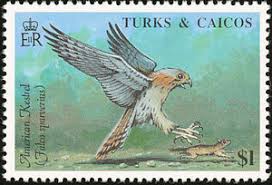Not so long ago, on a drive down a rural road in Minnesota you’d often see an American kestrel (Falco sparverius) perched on a power line, watching for a dragonfly or small rodent to pass beneath. If you were really lucky, you’d spot this smallest member of the falcon family flapping its wings in its unusual hovering flight as it watched for prey. Such sights are becoming increasingly rare. These handsome little raptors, about the size of a mourning dove, are suffering a long-term and widespread population decline. No one’s quite sure why, but their numbers have dropped by 73 percent in Minnesota over the past 50 years. In New England, they’ve dropped more than 90 percent.
Julian Sellers spends a great deal of time each spring and summer on his “kestrel trail, monitoring nest boxes in several parks and preserves around the metro area. “About five years ago I began to notice the general scarcity of kestrels along highways and country roads where they used to be common,” said Sellers, a member of the St. Paul Audubon Society.
Kestrel Facts:
• They’re about the size of a mourning dove.
• Males have blue-gray wings and a red back and tail; females are duller in color. Both have two vertical black stripes on each side of their face.
• They eat insects, small rodents, lizards and snakes.
• They summer in Minnesota, then migrate south. Peak fall migration here is early September to early October.
• Many spend the winter in the southern U.S.
Source: Star Tribune, September 5, 2017
http://m.startribune.com/minnesota-volunteers-try-to-reverse-decline-in…

- Login om te reageren
